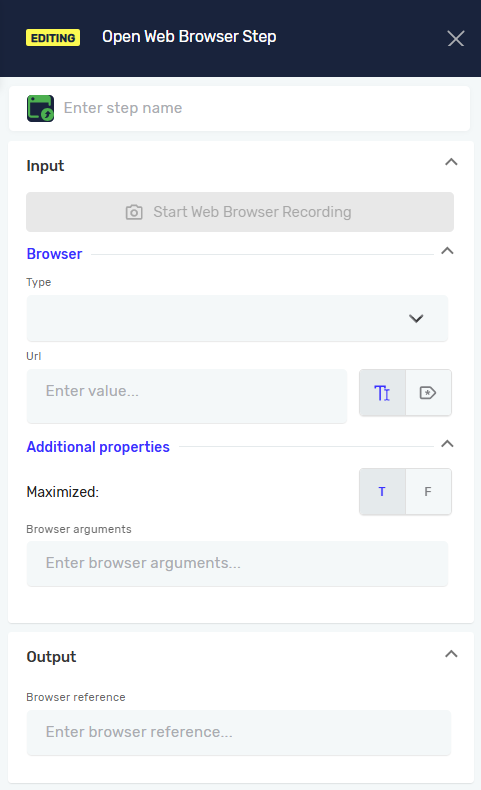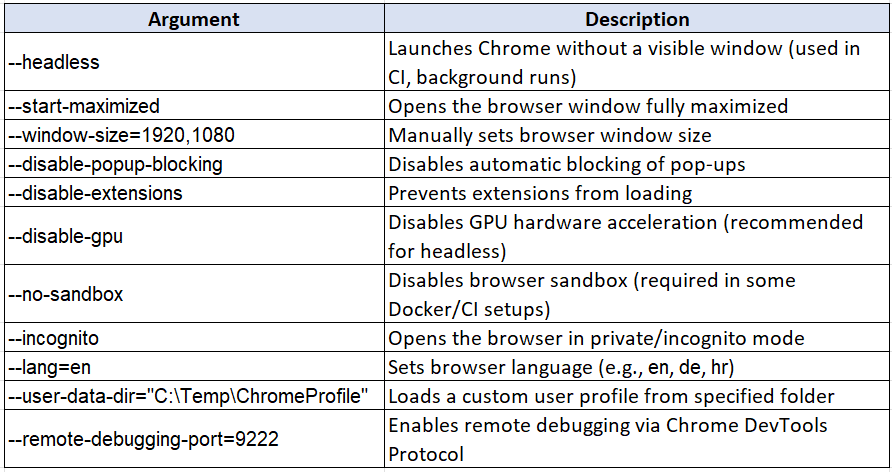Open Web Browser Step
Brief description
This step opens a web browser to the site you define with a URL. The step works with a Selenium driver, which will be automatically downloaded to match your selected browser and its version.
Step Information
Step Name (Not required)– the custom name of the process step that labels the editor’s process step box
Input Parameters
- Start Web Browser Recording (Not required)– button to record the steps and selectors for each element you need (available once you select the browser type and enter the URL)
- Type (Required)– browser type that you want to automate from the dropdown menu:
- Chrome
- Edge
- Url (Required)– URL of the webpage that you want to automate
- Maximized (Required)– Toggle the button to choose whether you want your page to be maximized:
- T (true)
- F (false- default value)
- Browser arguments (Not required)– special flags passed to the browser at startup to customize its behavior

Additional comments
When launching a Chromium-based browser (like Google Chrome or Microsoft Edge) using Selenium or any automation tool, you can pass special command-line arguments (also called flags) to customize the browser’s behavior. These arguments allow you to control how the browser starts such as enabling incognito mode, disabling popups, or running in headless mode.
Arguments are passed as strings, prefixed with --, and you can pass multiple arguments by separating them with a space.

Here are some of the most frequently used command‑line arguments for Chromium‑based browsers (Chrome, Edge) when automating via Selenium.

Most command-line arguments listed here work across Chromium-based browsers (like Chrome and Edge); however, be cautious with the WebDriver you are using, as some Microsoft Edge-specific arguments may not work in Chrome, and vice versa. This list covers flags that are generally compatible with multiple Chromium-based browsers.
NOTE: If you don’t have internet access or permission for the robot to automatically download the Selenium driver, it must be downloaded manually.The driver should be placed on the VM under the path:
C:\Users\%username%\.cache\selenium
Inside this directory, create a folder for the browser type you selected, either chromedriver or msedgedriver. Within that browser folder, create a subfolder named win64, and inside it, create another subfolder with your driver version (e.g., 142.0.7444.61). Before doing this, make sure to check which version of the selected browser is installed on the machine where the process is executed, so that the driver version matches the browser version. More details can be found in the documentation. Place the appropriate driver file inside that version folder.

